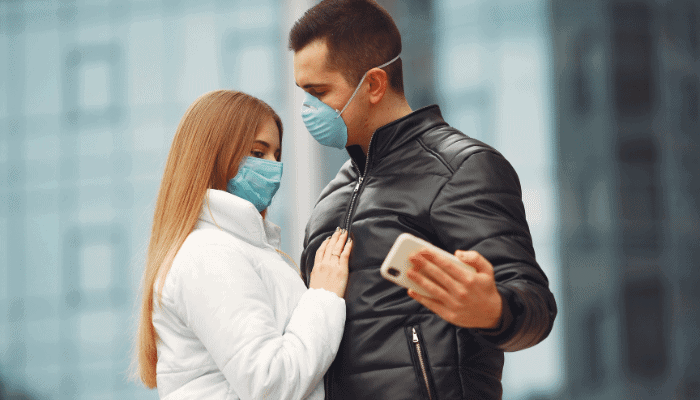By Kevin Grauman
While many states in the Northeast, which experienced horrific, medical system-straining COVID-19 outbreaks in early spring, seem to have the pandemic under control (at least for now), the insidious disease’s ongoing march through the Southern U.S. and the American heartland continues. Once this first wave subsides, a second wave is all but certain according to many experts.
Fortunately, we have more knowledge regarding disease transmission patterns, and new treatment protocols have proven to be effective. In preparing for the second wave, the medical community—from doctors’ offices to hospitals and government agencies—should immediately prioritize investments in innovative technologies that have been developed specifically to ensure the system is better prepared to handle a heavy volume of cases. These investments will allow new treatments and protocols to do their part in combating COVID.
Three areas of focus for technology investment should be contact tracing, management of foot traffic and crowding, and resource stewardship.
Contact tracing is extremely labor intensive, but it is the only way the medical community and public health officials can stay ahead of the outbreak and implement the right measures at the right time to stop the disease dead in its tracks. Among the key pieces of knowledge gleaned from the first wave is the super-spreader effect. The coronavirus is transmitted primarily at large, indoor social gatherings or in dense crowds where a few asymptomatic individuals with larger-than-usual viral loads release airborne droplets. These droplets then make their way into the respiratory systems of new super spreaders.
By pinpointing specific super spreaders and focusing on gatherings they attended, public health officials can identify people who were exposed, test them and move them into quarantine if necessary. Smartphone technology has a critical role to play in contact tracing. Countries that effectively shut down the pandemic have used location monitoring data to reach people who have been exposed to a super spreader’s droplets.
While there are privacy matters to deal with, Americans may be warming up to the trade-off of privacy for effective COVID-19 control. In March, when the outbreak was largely limited to the Northeastern U.S. corridor, just over half the people polled by the Harris Polling Group approved of cell phone monitoring. Since then, the virus has reached every community in the U.S. and killed more than 170,000 people. As the realities of COVID-19 hit closer to home for more people every day, it stands to reason that more people would be comfortable with cell phone-based tracing.
Foot traffic management is no longer optional at healthcare facilities and doctors’ offices. Without a system that optimizes clinics and medical centers for social distancing, the pandemic will continue. Effective foot-traffic control (or queue management) works by reducing the number of people in a location, like a waiting room or at check-in, so people can spread out. Appointments are made online and patients receive real-time notifications if there is a backup and can also notify the office, through an app, if they are running late. Additionally, the platform collects data and analyzes various patterns so it can space out appointments with increasing precision.
A well-designed queue management platform can reduce the number of patients in waiting rooms at a given time by up to 35 percent without reducing the volume of patients seen. It allows staffers to spend less time managing the waiting room and more time delivering quality care.
Resource stewardship became a major focus in the early days of the pandemic due to a severe shortage in PPE, ICU beds and ventilators. Effective management of these physical assets begins with artificial intelligence-driven predictive modeling tools that give administrators and government officials an accurate picture of which patients–and how many–will develop a severe illness based on data collected from prior cases around the world.
Predictive modeling allows medical centers to make better real-time decisions concerning treatment of specific cases and resource allocation. In fact, a recent study in the journal Computers, Materials & Continua found that “mildly elevated alanine aminotransferase (ALT) (a liver enzyme), the presence of myalgias (body aches) and an elevated hemoglobin level (red blood cells), in this order, are the clinical features,” that indicate—with 70 to 80-percent accuracy—which COVID-19 patients will develop severe respiratory illness.
There are no more excuses. Every day we are learning more about how the virus spreads, how it affects individuals and how to treat it effectively. As we learn, the most brilliant and innovative minds continue to develop new tools that gather the data and make sense of it. There is no silver bullet, including vaccines, that will make COVID-19 disappear from our lives. There is, however, a lot we can do to prevent it from spreading, and we now have the technological tools to help us. With the clock ticking, there is no time to delay implementing them.
Kevin Grauman is the President and CEO of QLess, a line management system used by retail, education and government industries. He is no stranger to the world of startups, with a proven track record as a successful U.S.-based executive leader and entrepreneur. Kevin has been recognized as one of the “100 Superstars of HR Outsourcing in the USA” by HRO Today Magazine.
The Editorial Team at Healthcare Business Today is made up of skilled healthcare writers and experts, led by our managing editor, Daniel Casciato, who has over 25 years of experience in healthcare writing. Since 1998, we have produced compelling and informative content for numerous publications, establishing ourselves as a trusted resource for health and wellness information. We offer readers access to fresh health, medicine, science, and technology developments and the latest in patient news, emphasizing how these developments affect our lives.








